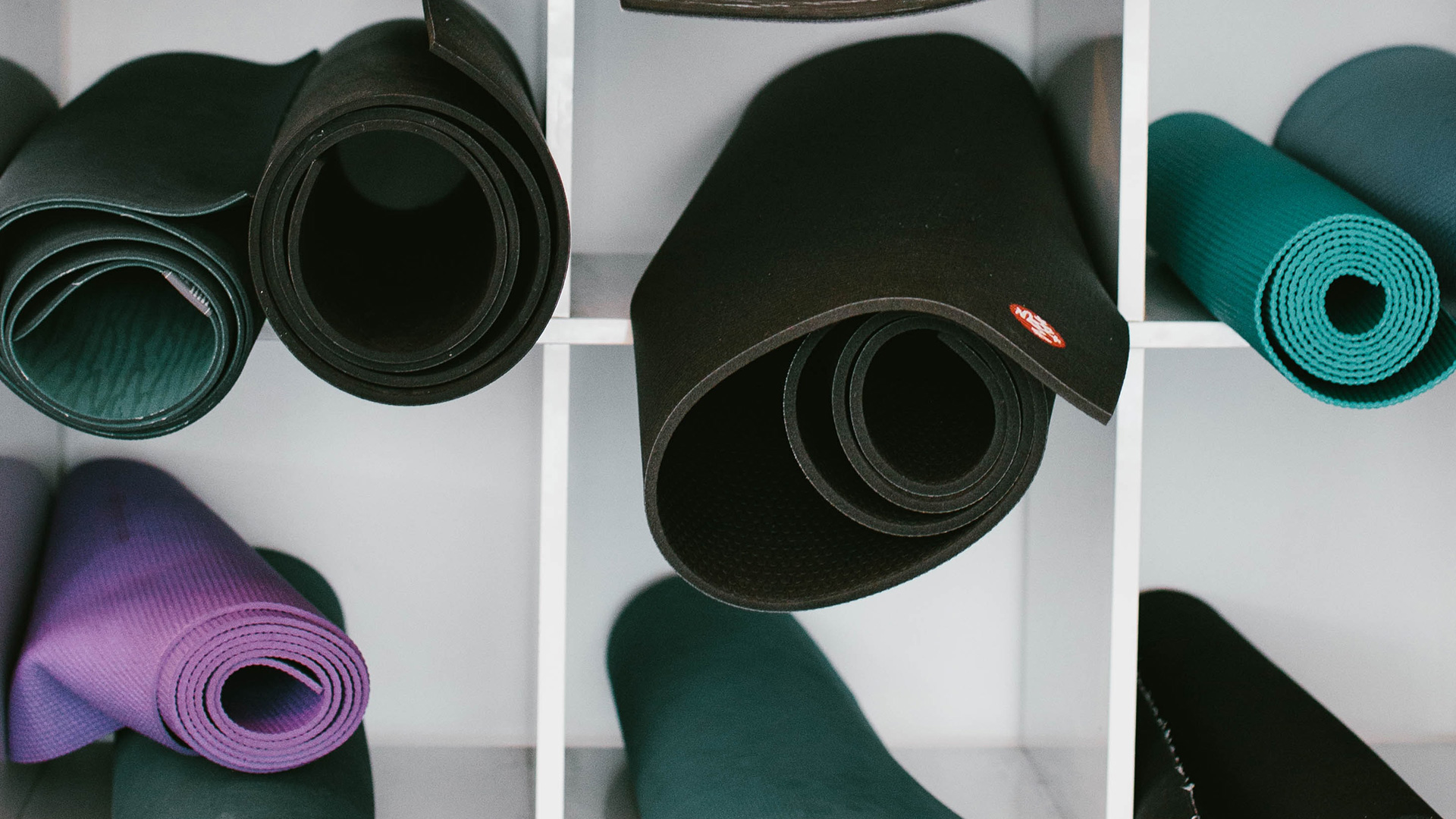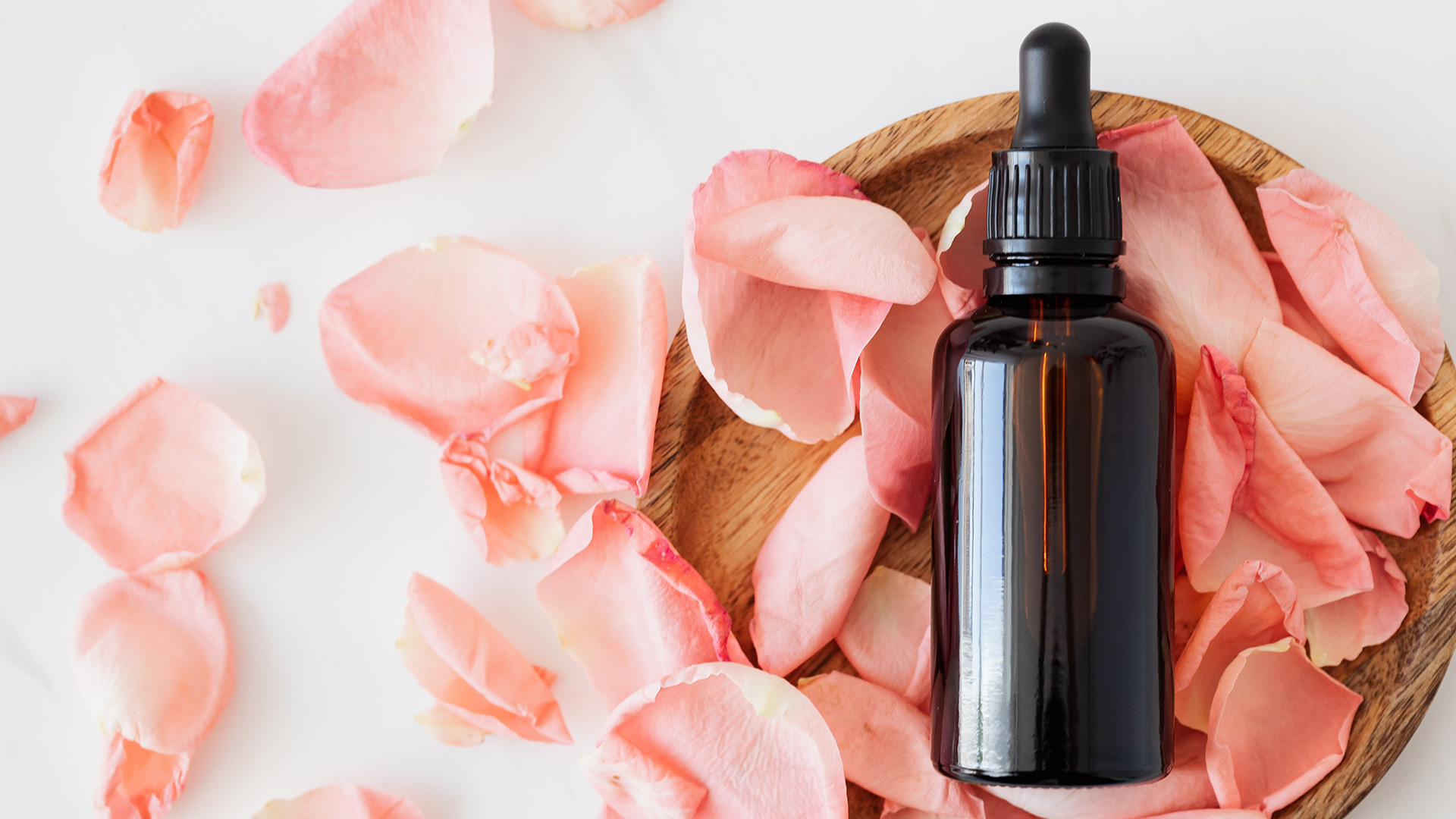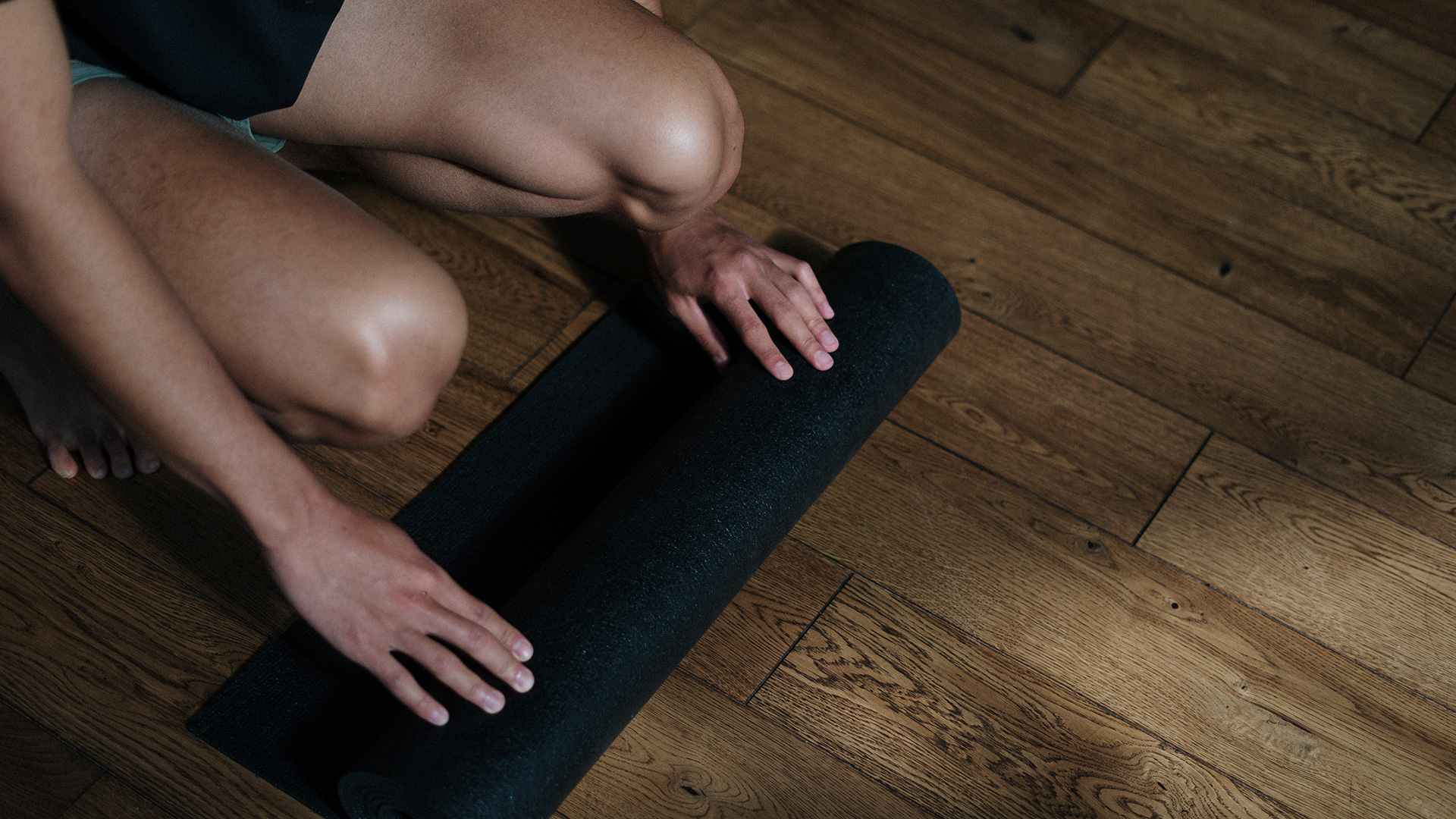
With yoga studios being closed for the majority of the year, you may have invested in your own yoga mat to use at home. Of course, this probably means it isn't getting the same regular cleaning that mats at studios receive. But don't worry, we've put together a guide on how best to clean your yoga mat no matter the material it's made from.
Not all mats are the same: our guide to the best yoga mats includes PVC foam, rubber and cork options, and it's important to know what your mat is made of before you attempt to clean it. If your mat is made from PVC, you have many options available to you to ensure it's cleaned and disinfected regularly before those sweat stains and dirty feet marks start to change the colour of the mat in its entirety. However, polyurethane and natural rubber mats need more love and care as some products can damage your mat and take away its non-slip properties. And well, cork mats are naturally meant to be antibacterial and repel odours so little is required in terms of cleaning when it comes to these mats. Hurrah!
- Tackle tricky poses with one of the best yoga blocks
- Best wake-up light: Rise more naturally in the mornings
- Relieve anxiety with one of the best weighted blankets
You can use a small amount of disinfectant spray on all mat types to kill off any unwanted germs. Whenever you spray your mat down with anything, leave it to dry completely before rolling it back up and storing it. The general rule of thumb is to use disinfectant sprays only after cleaning. The CDC advises, “Cleaning with soap and water reduces the number of germs, dirt and impurities on the surface. Disinfecting kills germs on surfaces.”
Read on for an in-depth guide to how to clean yoga mats of all kinds, plus some top tips for stopping them from getting dirty in the first place.
How often should I clean my yoga mat?
It's a good idea to clean your yoga mat after each or every other practise. This will help to stop a build up of dirt on the surface and any horrible smells that may develop if you neglect mat cleanliness.
If your mat is made from PVC, it'll withstand more robust cleaning, so if you forget for a while you can do a proper deep clean later. However, polyurethane, natural rubber or cork mats are harder to deep clean, so regular, light cleaning should be maintained to reduce the amount of bacteria living on your mat.
If you are frequently practising hot yoga or other more energetic styles, we advise you spray down your mat with a yoga mat cleaner or soapy water using a cloth after each session. If you practise more gentle forms of yoga then a wipe down after every other class will do the trick.
Get all the latest news, reviews, deals and buying guides on gorgeous tech, home and active products from the T3 experts
- Browse the best yoga pants and leggings to keep you comfy as you practice
How to clean a PVC yoga mat
PVC mats – the lightweight foam mats you'll find in many yoga studios – are 'closed-cell structures', meaning they can withstand a lot more in terms of rigorous cleaning and don't absorb water, or in fact sweat. However, this doesn't mean other germs won't gather on the surface.
Essentially PVC mats are non-porous, which means you can use soapy water and a towel to remove grime from the surface. Don't be afraid to give these types of mats a good dousing of soapy water; they can take it. Using a disinfectant after this initial clean is a good idea to ensure any bacteria are fully removed.
PVC mats are the most robust and can also be cleaned rigorously by soaking them in water in the bath or shower, for example, if you ever need to give them a deep clean. A spray of water and essential oils can be used on this type of mat for a pleasant smell next time you use it.

How to clean a polyurethane yoga mat
If your mat is polyurethane, never soak it in water. These mats are considered ‘open-cell structures' meaning they are porous and water can leave long lasting stains. If you are tempted to use your own mix of water and essential oils to remove any nasty smells, think twice with these mats. Oils can leave stains so avoid using homemade concoctions.
We advise to only ever spray these mats down with a little soapy water and a soft cloth. Using anything else may remove the mat's non-slip properties or leave you with ugly looking stains.

How to clean a natural rubber or cork yoga mat
With our eco-friendly option of the natural rubber yoga mat, it's a good idea to use a specially made yoga mat cleaner suitable for this type of mat. You can also use a towel that's been soaked in mild soap and water and thoroughly squeezed out. Be gentle when wiping down your mat. These mats are meant to biodegrade so heavy cleaning isn't advised; they aren't built to withstand this.
You can use a small amount of disinfectant spray on all mat types to kill off any unwanted germs. Whenever you spray your mat down with anything, leave it to dry completely before rolling it back up and storing it.
Finally, cork is naturally antibacterial so theoretically you don't need to clean these mats. They repel odours too so there shouldn't be a need to use any essential oil concoctions on these either.
Can I put my yoga mat in the washing machine?
Yes and no. It depends on the material of the mat again. Yes, it can help if you have a PVC mat because the mat can be soaked and is safe to use with a detergent. We suggest a hand wash, cold function only. Never put polyurethane, natural rubber or cork mats through the washing machine.
Sadly, throwing your yoga mat into the washing machine won't solve all your problems. It won't remove stains made from dirty feet so, we hate to tell you this, your mat will never look new again. It may be germ free but it won't be stain free. If you do pop your mat in the washing machine, make sure you hang it to dry naturally and expect this to take two to three days.

Extra tips on how to keep your yoga mat clean
To make sure you get years out of your yoga mat, no matter what the material, here are a few of our tips:
Clean your feet before you practise – If you've been walking around barefoot at home or outside and then you come to your mat, guess what? Those dirty feet are going to leave marks all over your mat! Wipe down your feet with warm water before you start your class.
Use a yoga towel to protect your mat during practise – This will protect your mat from sweat and oily head stains; our pick of the best yoga towels has some great options to help keep your mat looking brand new.
Use a blanket under your head in relaxation – Hair has natural oils that can leave marks on the end of your mat. Using a blanket under your head when in relaxation, typically the longest time we lie down in a yoga class, can help to keep these stains from forming
Kat has 10 years of yoga teaching experience with further training in supporting injured students. She is qualified to teach Yin Yoga, Hormone Yoga Therapy and more traditional forms of Hatha yoga. She also has a certificate as a Yoga Therapy Practitioner.